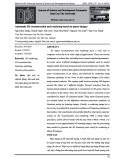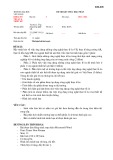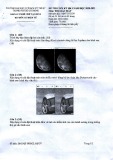
Exploratory Data Analysis

Overview
1. Introduction
2. Application
3. EDA
4. Learning Process
5. Bias-Variance Tradeoff
6. Regression (review)
7. Classification
8. Validation
9. Regularisation
10. Clustering
11. Evaluation
12. Deployment
13. Ethics

Lecture outline
- Definitions
- Data types
- Steps in Exploratory Data Analysis (EDA)
- General characteristics of the dataset
- Descriptive statistics (univariate)
- Correlation statistics (bivariate)
- Exploratory visualisation - univariate and bivariate
- Anomalies - outliers and inliers
- Missing values
- EDA in real-life practice

Definitions
Exploratory data analysis is an attitude, a state of flexibility, a willingness to
look for those things that we believe are not there, as well as those we
believe to be there.
The primary aim with exploratory data analysis is to examine the data for
distribution, outliers and anomalies … hypothesis generation by visualising
and understanding the data. https://link.springer.com/chapter/10.1007/978-3-319-43742-2_15
John Tukey, 1977, Data Exploratory Analysis, Addison-Wesley
Exploratory data analysis can never be the whole story, but nothing else can
serve as a foundation stone - as the first step.
John Tukey, 1977, Data Exploratory Analysis, Addison-Wesley























![Bài giảng Phân tích thiết kế hệ thống [Mới nhất]](https://cdn.tailieu.vn/images/document/thumbnail/2025/20250811/vijiraiya/135x160/642_bai-giang-phan-tich-thiet-ke-he-thong.jpg)



